Hanging out with Will Reynolds, owner and founder of TreeNet Willy’s: Custom Rope Platforms for Elevated Living
Coya Pair ︎ Durango, Colorado


Durango has a propensity to attract a demographic passionate about the outdoors, art, culture and community, and Will Reynolds is no exception. Better known as Treenet Willy, he has found a way to interconnect nature and community through his own art medium: treenets.
Reynolds was first introduced to the idea behind treenets in 2008 through his cousin “Hippy Pete” who was making net structures in the redwood forests. Shortly after, Reynolds began building similar structures using paracord in the Durango area.
Now Reynolds runs an entire business centered around treenets: TreeNet Willy’s: Custom Rope Platforms for Elevated Living. The Dust sat down with Reynolds to discuss what exactly it takes to run a business like this and to live the lifestyle it requires.
Walk me through the net creation process. What is your technique?
For the most part, the clove hitch is my best friend. I like using the same knot over and over for symmetry reasons, as the eye will catch little blemishes of things that are out of line when we are making a pattern.
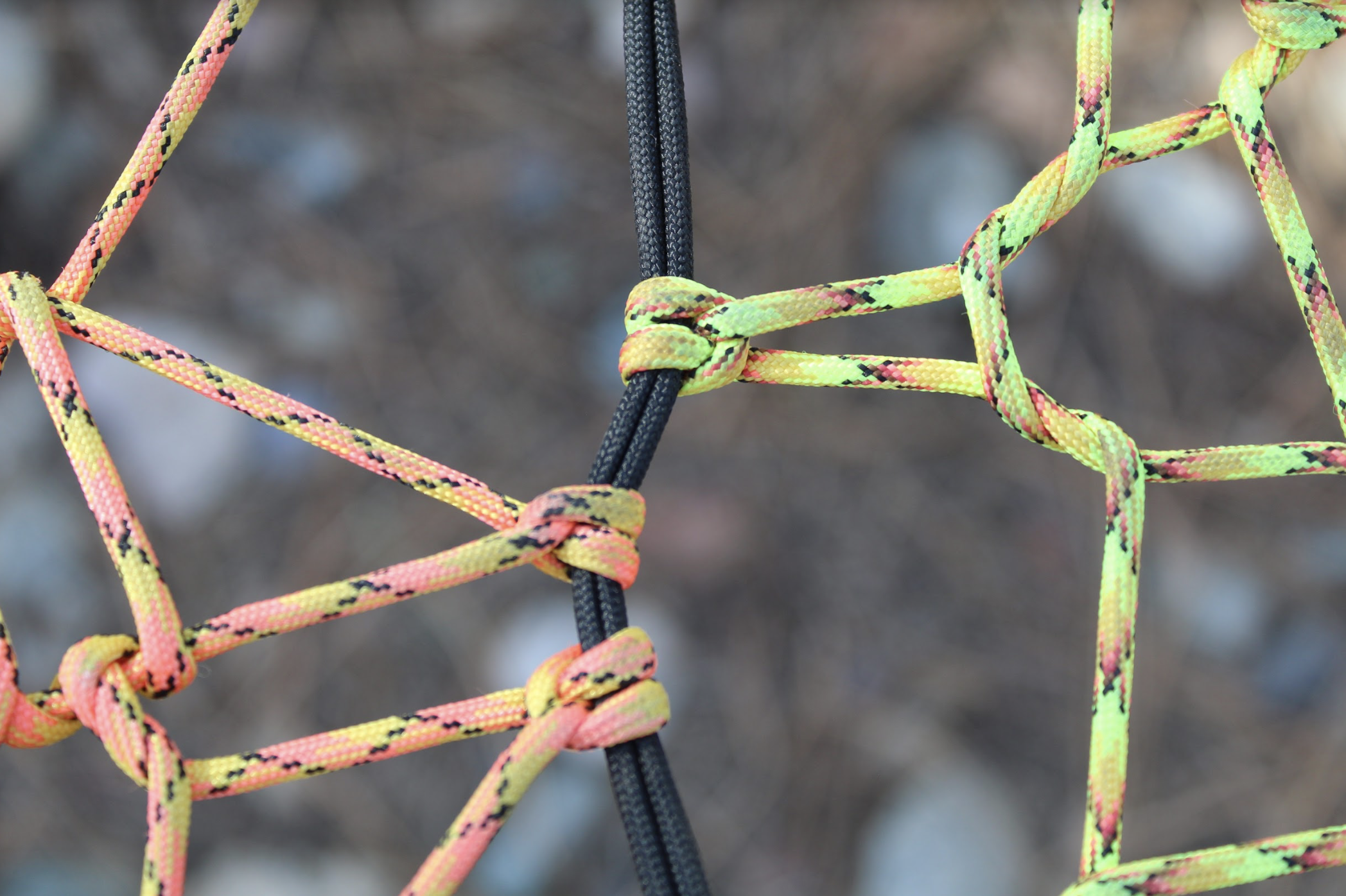
One of my greatest strengths when making these nets is focussing on the big picture, making the whole thing symmetrical, and making it aesthetically pleasing from close and also from afar.

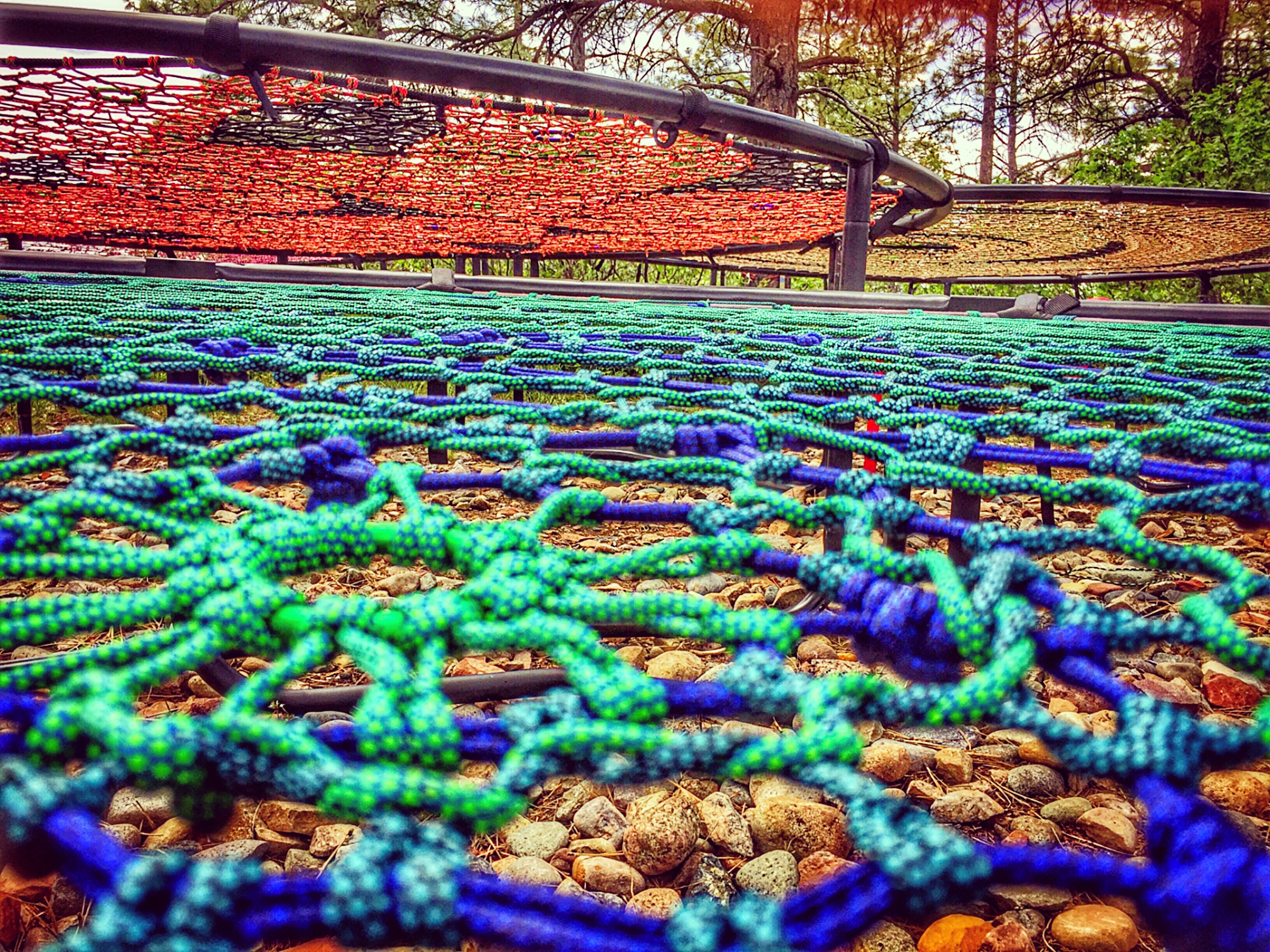
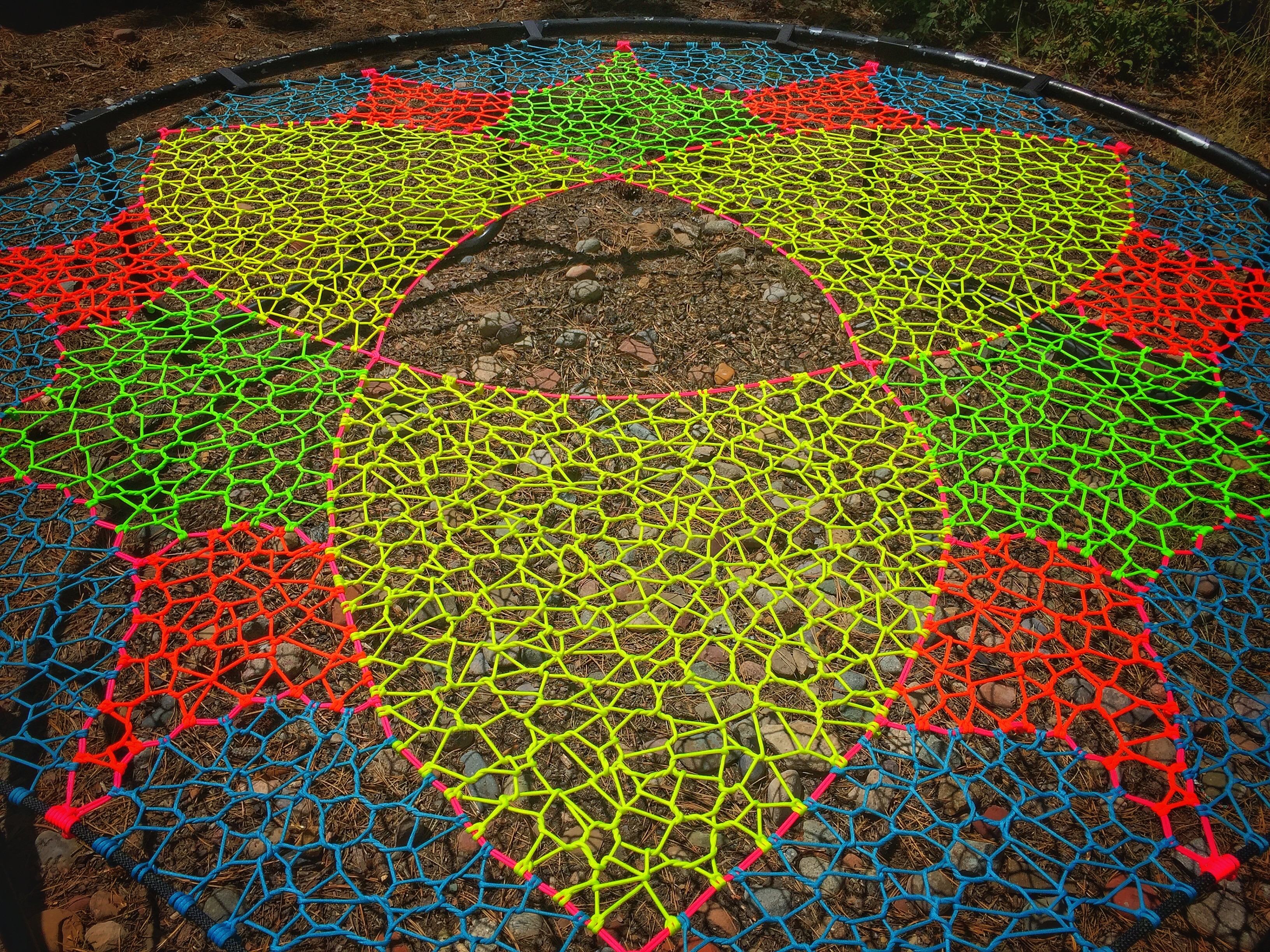
Can you list off some of the products you produce? How much money do each of these run for?
So there are numerous types of nets or installations that we can create for any application, temporary or permanent.
TreeNets: TreeNets are what we call our long-term net installations created within a tree or group of trees. These are made custom on spot and last for up to a decade or more in the same location. TreeNets have been around for decades, since the 90’s when people were living up in the redwoods to prevent clearcutting. Permanent backyard TreeNet projects start at $1,000 and go up with growing size and complexity.
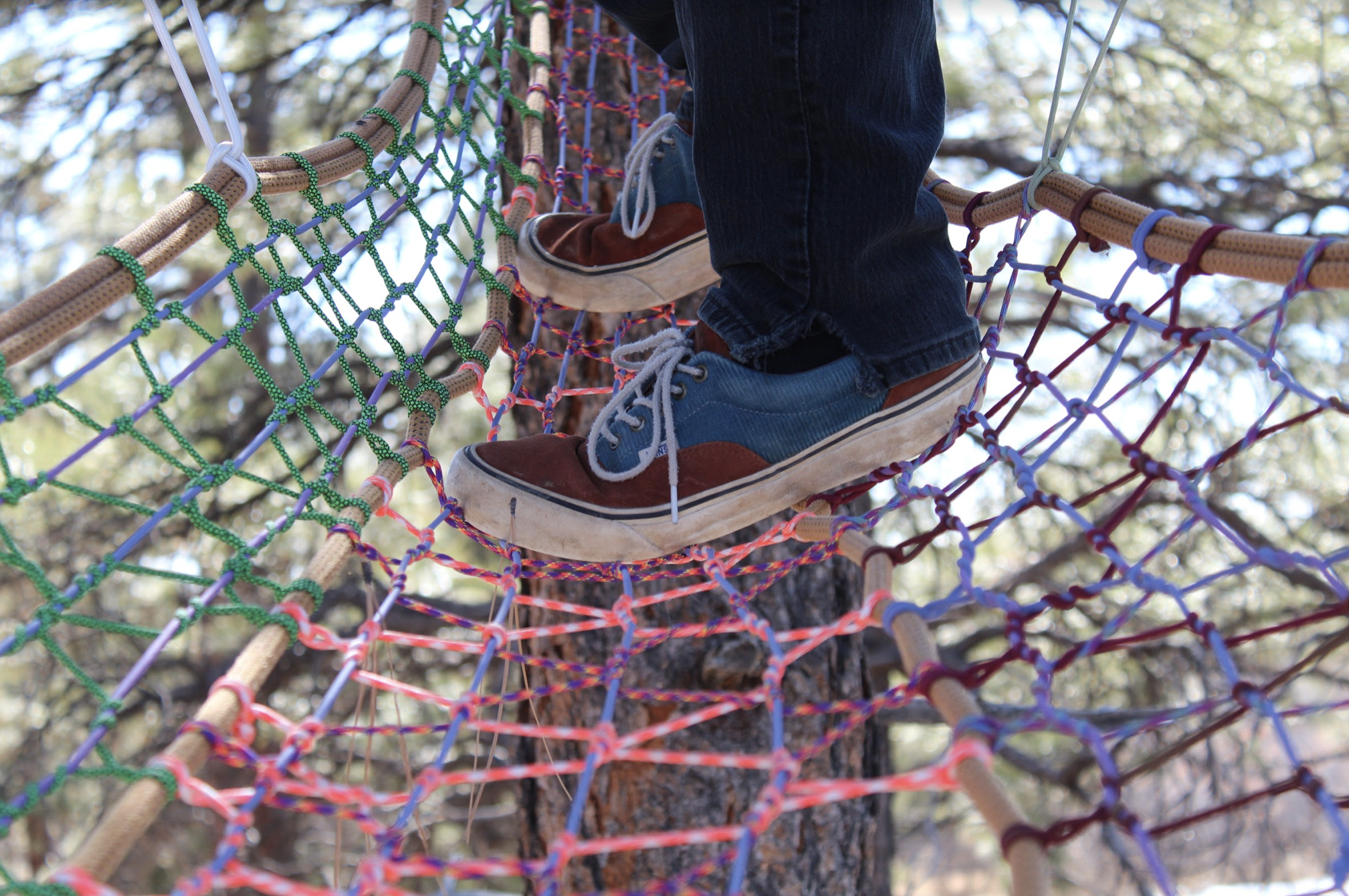
Spacenets: “Spacenet” is a term derived in 2013 from Andy Lewis, the mastermind of the massive nets rigged over the Fruit Bowl of Moab. I use this term to refer to any portable hammock-like net that’s rigged with ratchets or slackline gear. Our spacenets start around $400 for single person nets and get up to as crazy as you want to get. We commonly sell three to four person spacenets for around $600-800 each.
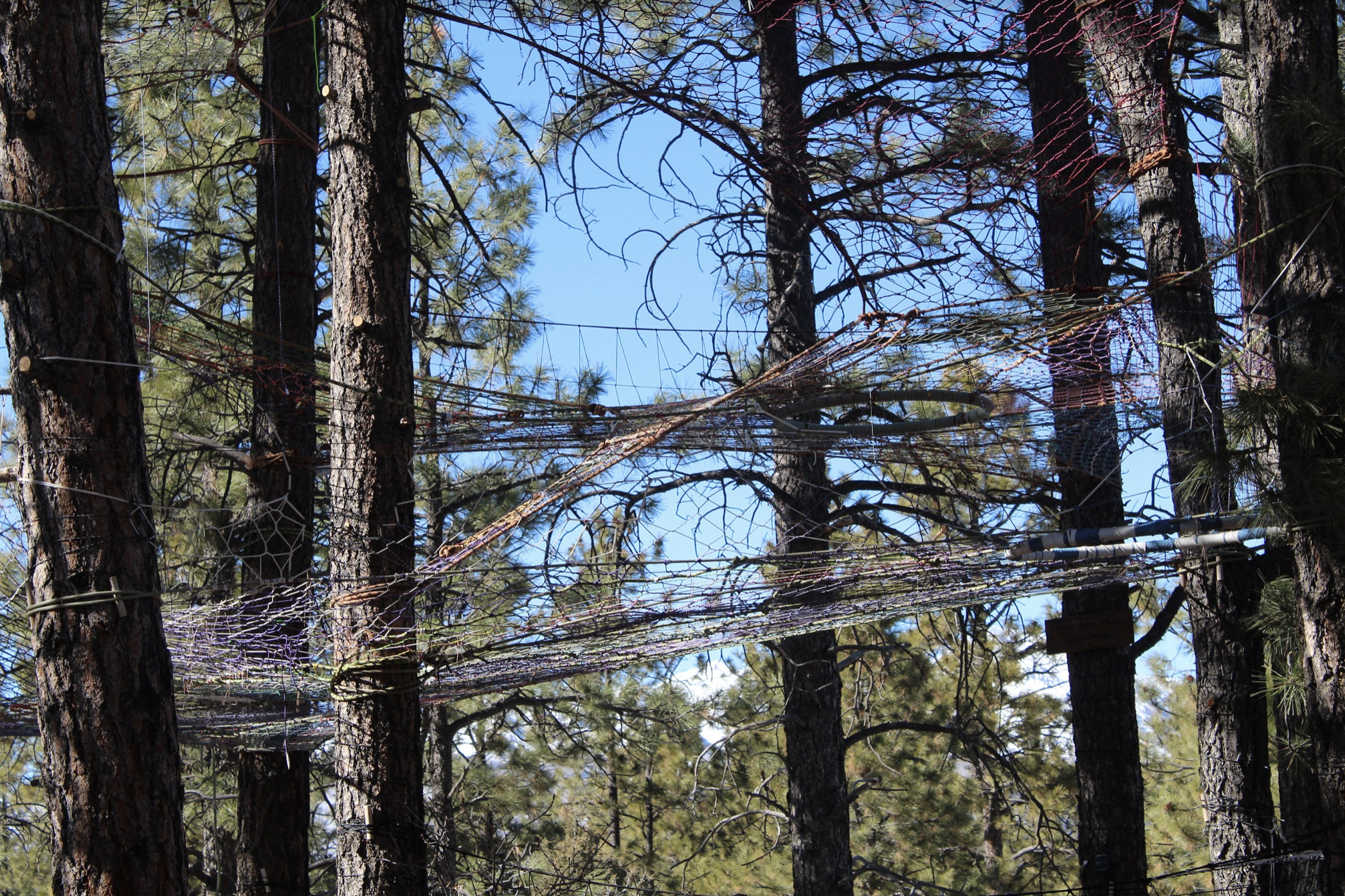
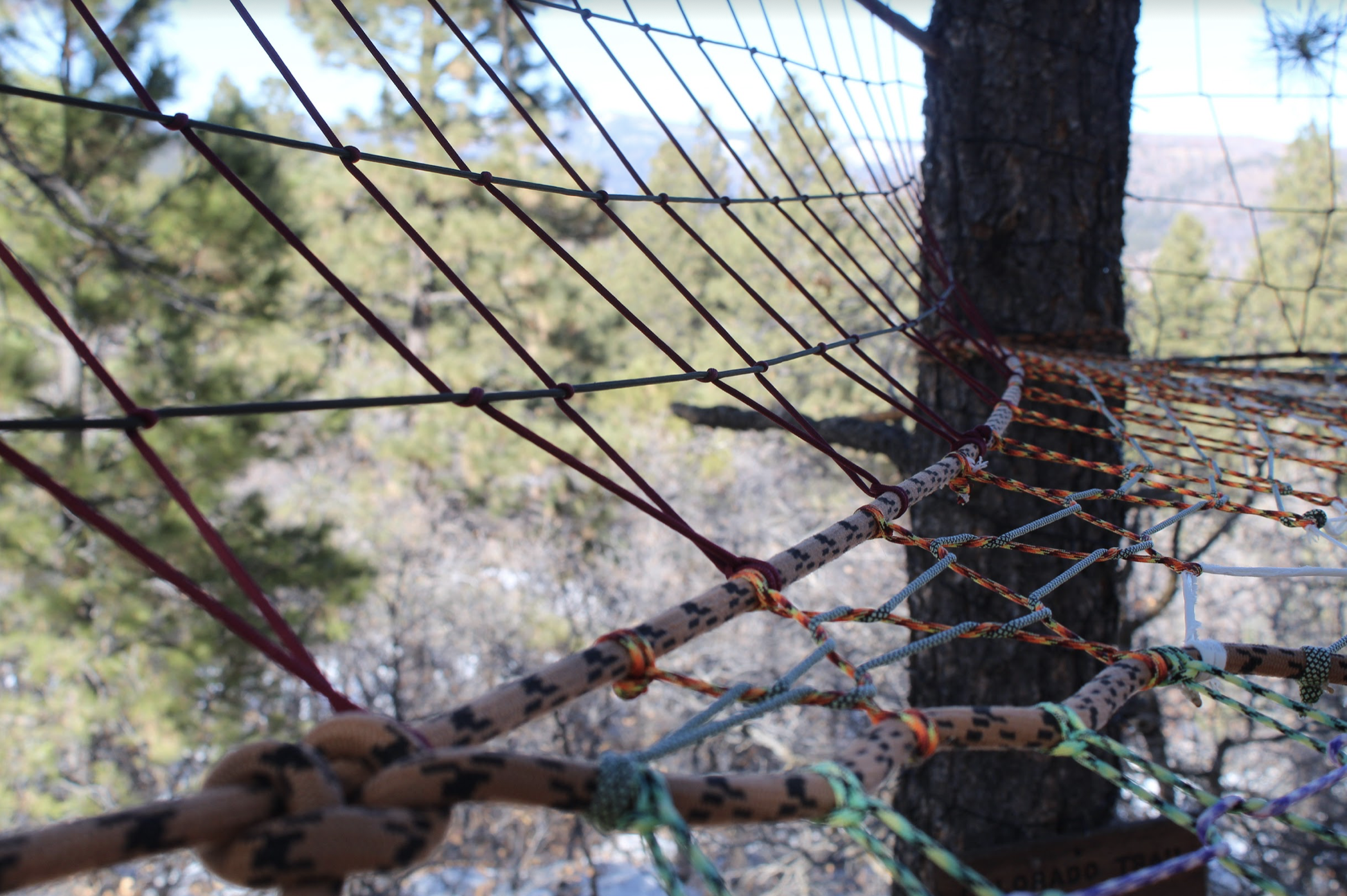
Spacenets in Reynolds’s own backyard | Photos Coya Pair
Trampoline Hammocks: The trampoline frame changed the hammock game for me in that I’m now able to suspend my nets within the frame, allowing me to create platforms without the need of preexisting trees, posts, or anchors. The lightweight frame allows for easy set up and break down, letting these become the perfect travel hammock set up that can fit up to six people. Our tramp net hammocks start off around $600 and go up in price with growing size and complexity.
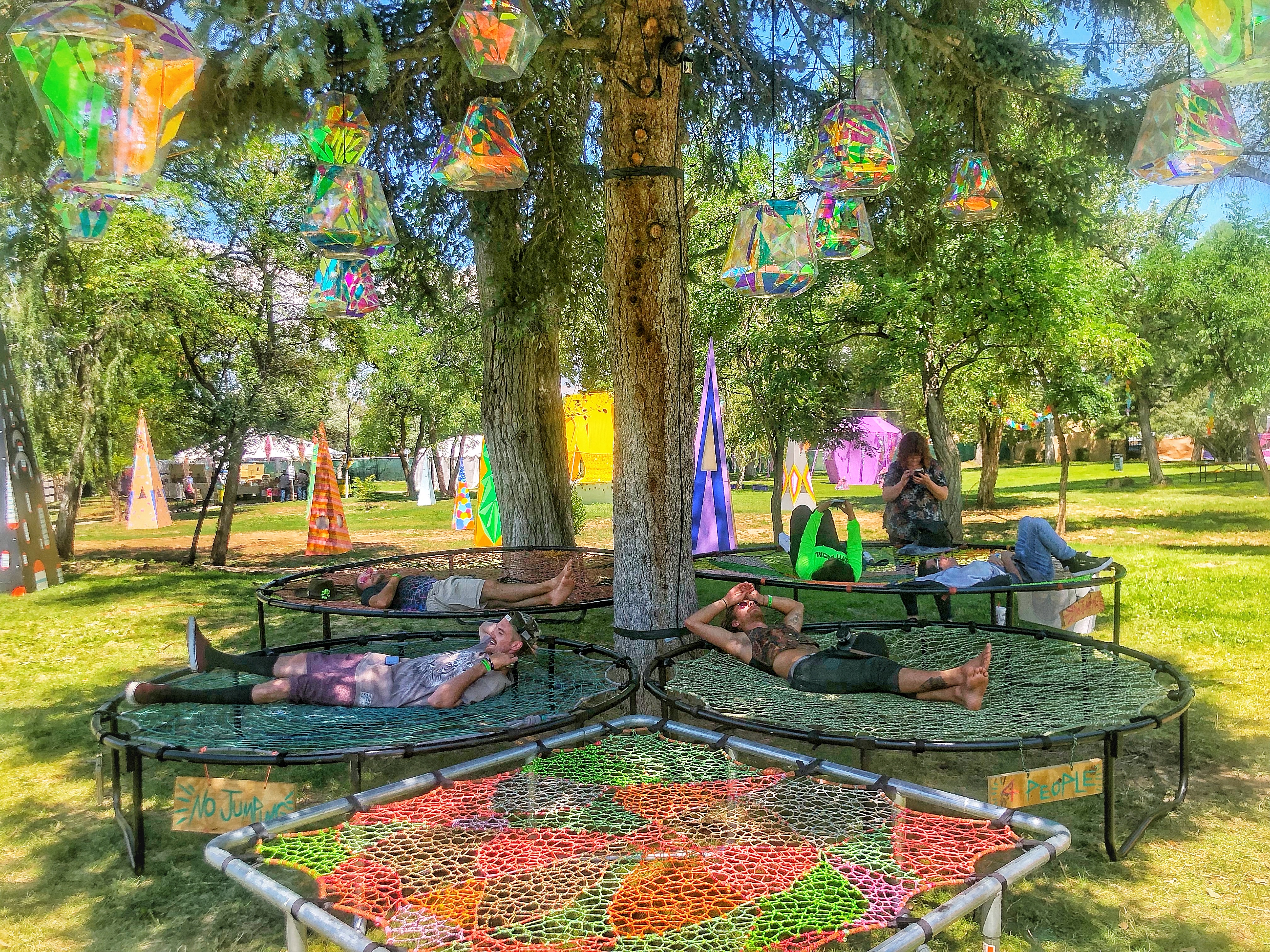
What is the coolest product you’ve ever made?
The coolest project we’ve ever done is probably the Neuro Net. This is a visual net installation for festivals that is set up within our 22 foot geodome. The net is a completely handwoven, interactive, string environment meant to resemble the brain synapses firing around inside the brain. The dome is filled with a patchwork system of multicolored, wormhole-style dreamcatchers; these mimicking the space and time grid, ultimately being warped into another dimension. Yarn is then added as the centerpiece as it adds a nice, gentle glow under UV. This 2D plane of the yarn is placed right below the 3D wormholes. This creates a multidimensional visual field that is then illuminated by projecting light beams that skim across the strings of all planes.
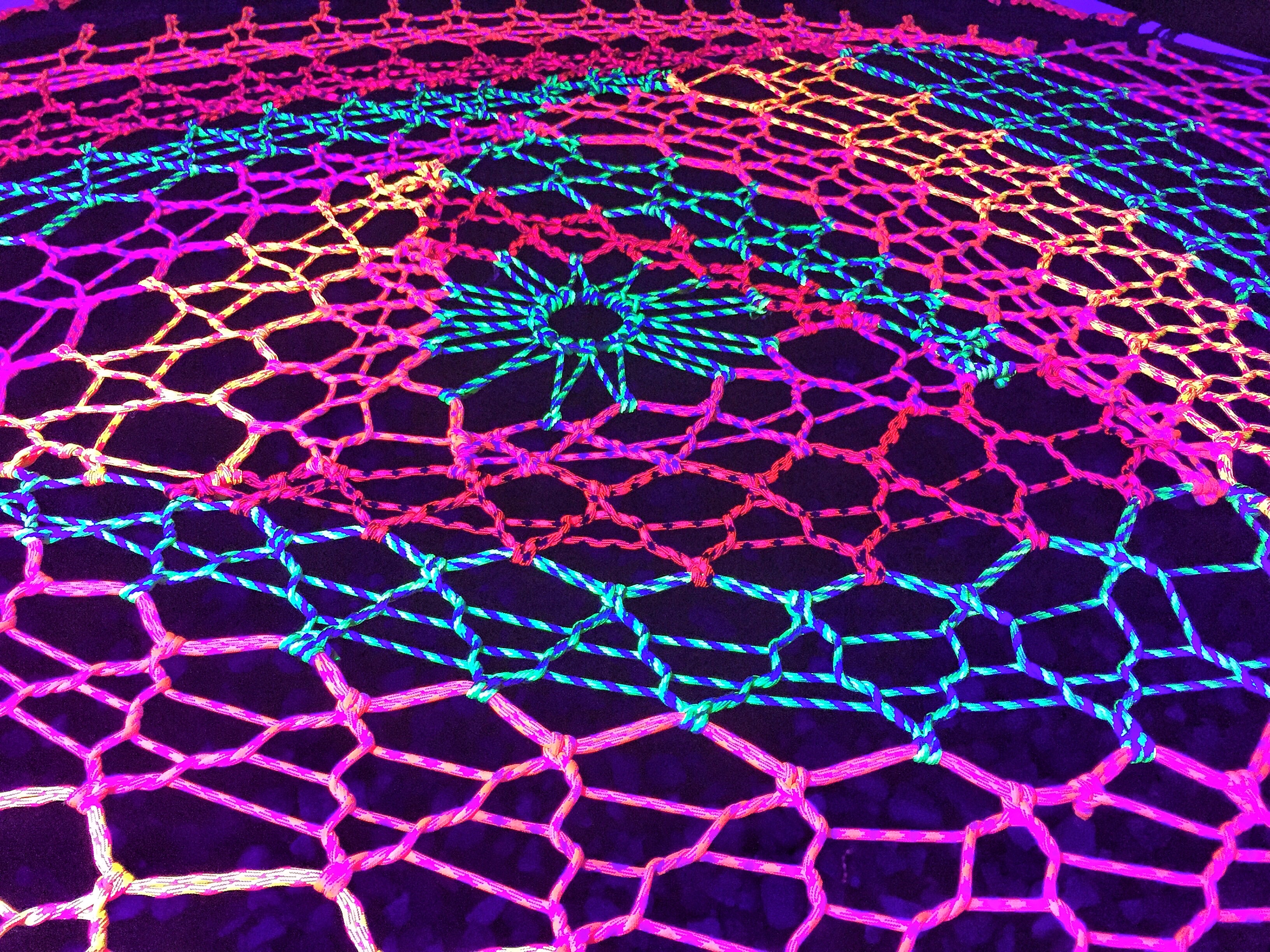
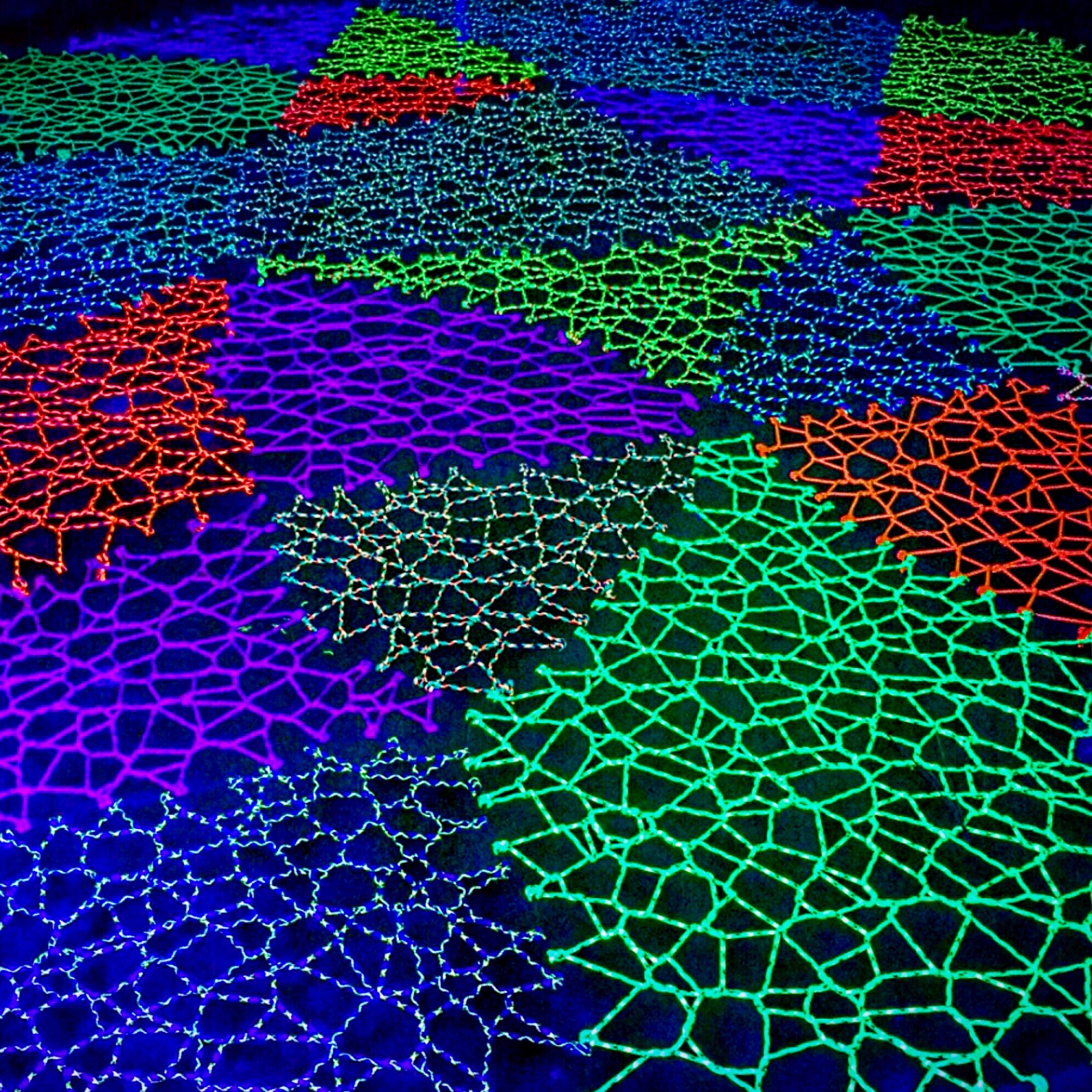

How did you get into the festival and art scene?
The nets plus the festival scene is totally a match made in heaven. I remember being at home one day and I was seeing blacklight paracord pictures of bracelets and dog collars on the Paracord Planet website, where I buy all my cord from. So, I ordered some bright colored paracord and a UV light. I can still remember lighting that net up that night- it was mind blowing! At that point I thought that if I could approach the festivals with an ‘artist installation’ angle, I would become a valuable part of the overall picture. I take great pride in being able to provide a beautiful place for all the festy-goers to sit or lay down and enjoy music or just take it all in. My first legit festival was Sonic Bloom in 2018 where we made a 25 person glowing spider web. Now we work with festivals all over the world!

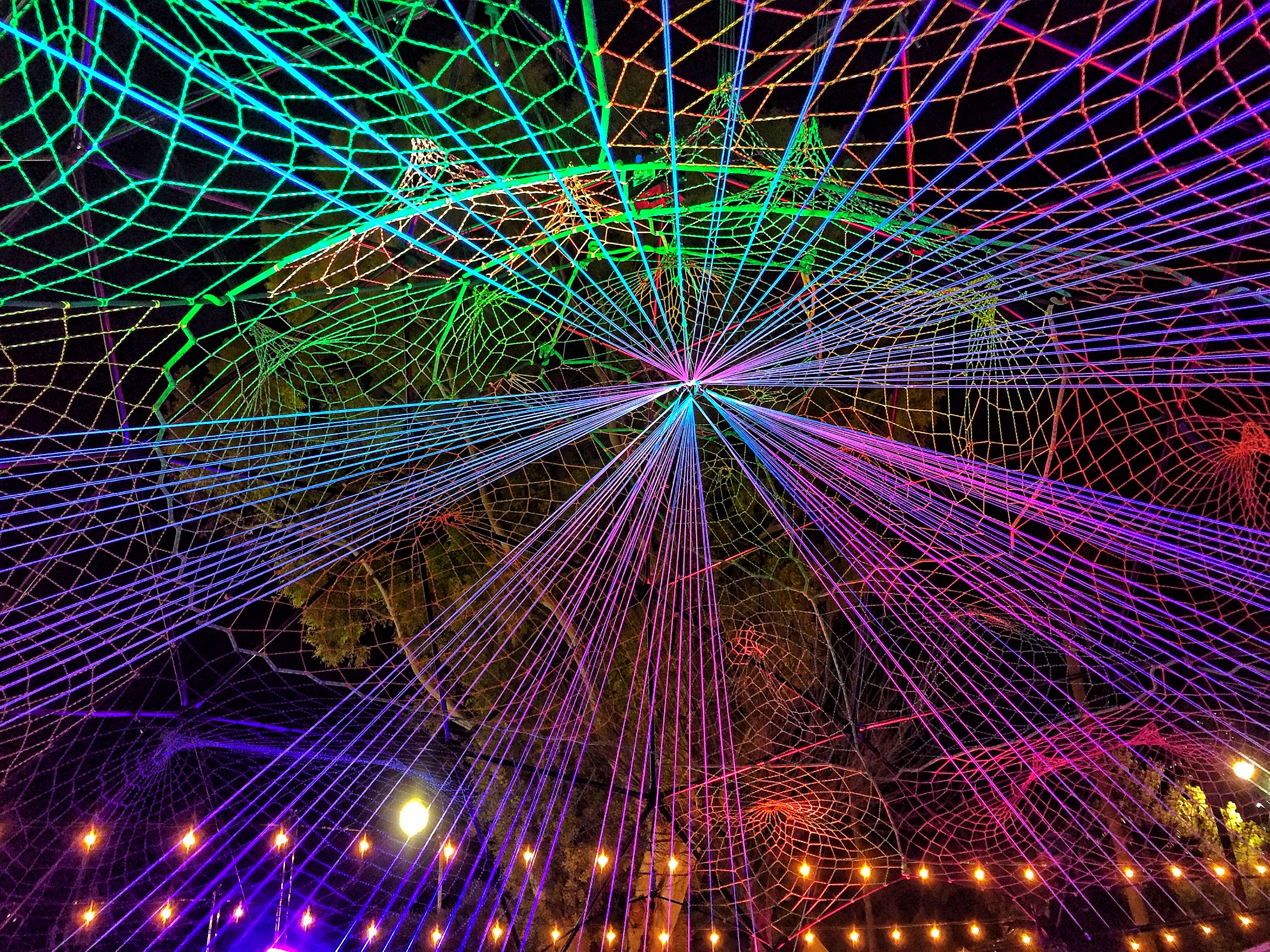
Has this line of work enhanced your sense of community, both internationally and locally? How so?
I think that the nets themselves are a catalyst for creating community. I meet hundreds of people a year, just hanging out on these nets at the festivals. There’s definitely a group of people that find ‘home’ in the nets, which provide a sacred space to decompress, relax, and socialize with others that are in the same moment at the same time. Nowadays there are custom hangout nets being made all over the world. Being a net maker, there’s definitely a community of people that have started forming together over the years with a similar set of goals and aspirations. Thus far, it has been great being one of the people that bring this community together to provide a space where we can all make money from our passions.
Are you able to make tree nets inclusive and available to all people- even those who aren’t athletic or outdoorsy? If so, how?
No doubt about it, I have a huge advertising advantage with the space nets that are rigged up at the Fruit Bowl. Personally I didn’t make those specific nets, nor did I really have anything to do with them, but when others see media of all these extreme outdoorsman base jumping, highlining, and skydiving, they’re completely blown away and can’t even conceive how that’s even done.

I’ve taken this mind blowing activity and made it accessible to anyone who wants to engage with that type of experience. You don’t have to be a highliner or base jumper to kick back and enjoy these nets anymore. That’s been a huge advantage for me: taking the ‘extremeness’ associated with these nets and instead turning it into an immersive art experience anyone can enjoy.
How do you think Treenet Willy’s became successful as a business?
I think there are a number of things that have led to the success of Treenet Willy’s, but the largest advantage I have had probably just boils down to the timing of everything, and the amount of experience I’ve picked up over the years.. I never advertised or threw my name out there until 2016- that’s when I did a 180 on my philosophy of net making and started advertising the best that I could. Selling art can be difficult, but luckily this is such specific work that does a great job of selling itself.
How many team members do you have? How do they help?
Currently, I have more than 30 team members, helpers, and collaborators all across the nation that chime in on different projects or help with events. Basically I break the teams up into festival groups and weaver groups. I try to get everyone updated on the weaving process, but for the most part, I have specialists for backyard projects and I have specialists for festivals and events.
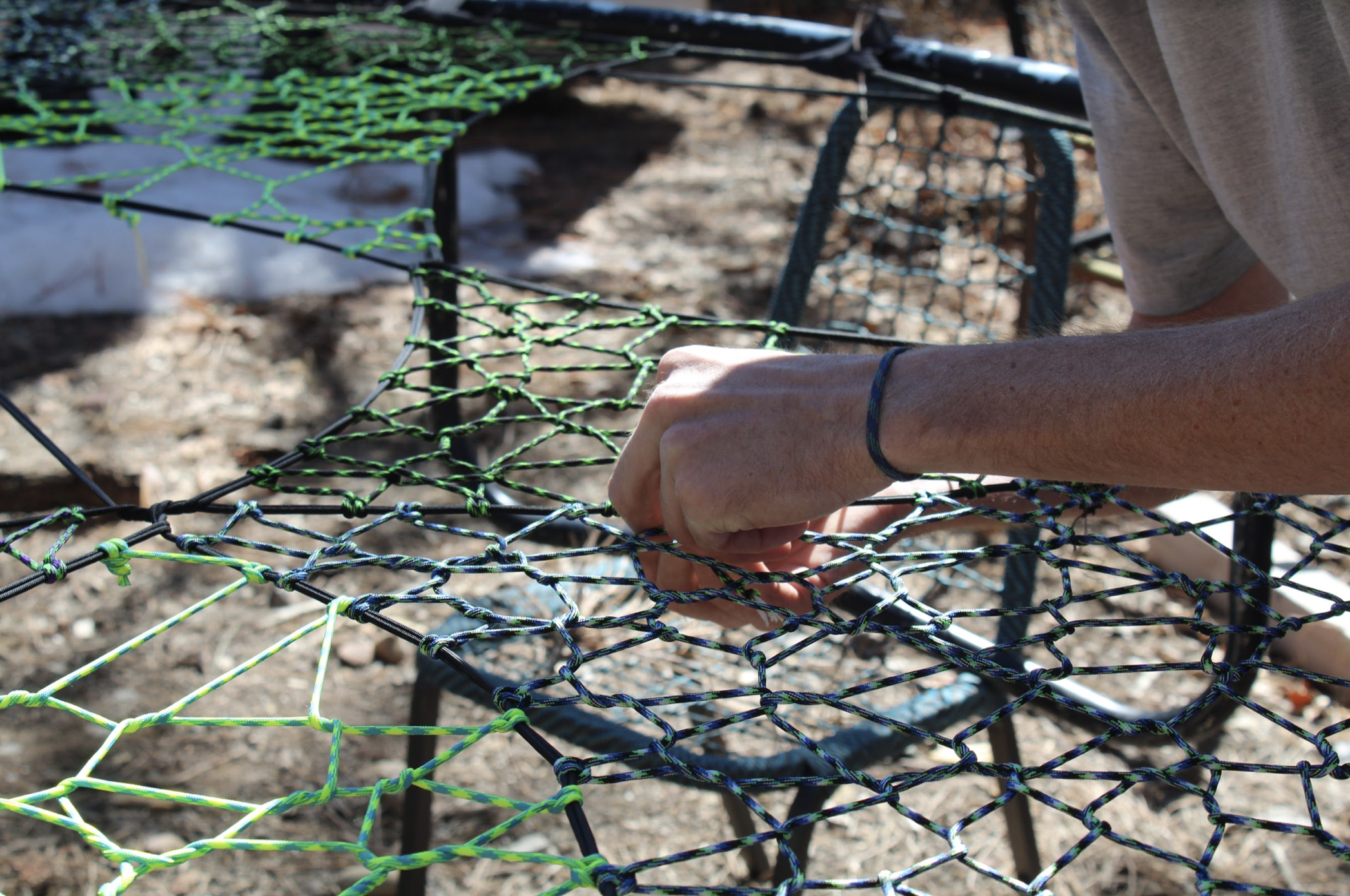

Where did the Name Treenet Willy come from?
The name TreeNet Willy was derived from Telluride back in 2015. At the time, I was making rogue nets in the valley with my buddies and I’d show up in town a few days a week, scavenging the area for the best places to kick back and enjoy the incredible scenery. Everybody knows each other in Telluride, so word had gotten out that someone was making tree nets in the area. One afternoon someone shouted out, “What up yo, it’s Treenet!” My buddy right next to me jokingly responded, “That’s Treenet Willy to you!” That’s when I knew I had developed a new net alias.
Do you have any epic experiences that you want to share?
One of my funniest net experiences was at Red Rocks Amphitheater waiting in line to get into the concert. I was chatting with my buddy standing next to me about my newest net project, when the two people in front me turned around and asked me if I had ever been to the one up at Fort Lewis.. I told them that I made that one and that I build nets full time. As I said that, the three people behind me started freaking out because they had been up there too throughout the years. We were blown away that all of us had been to that hidden spot, nearly 500 miles away.
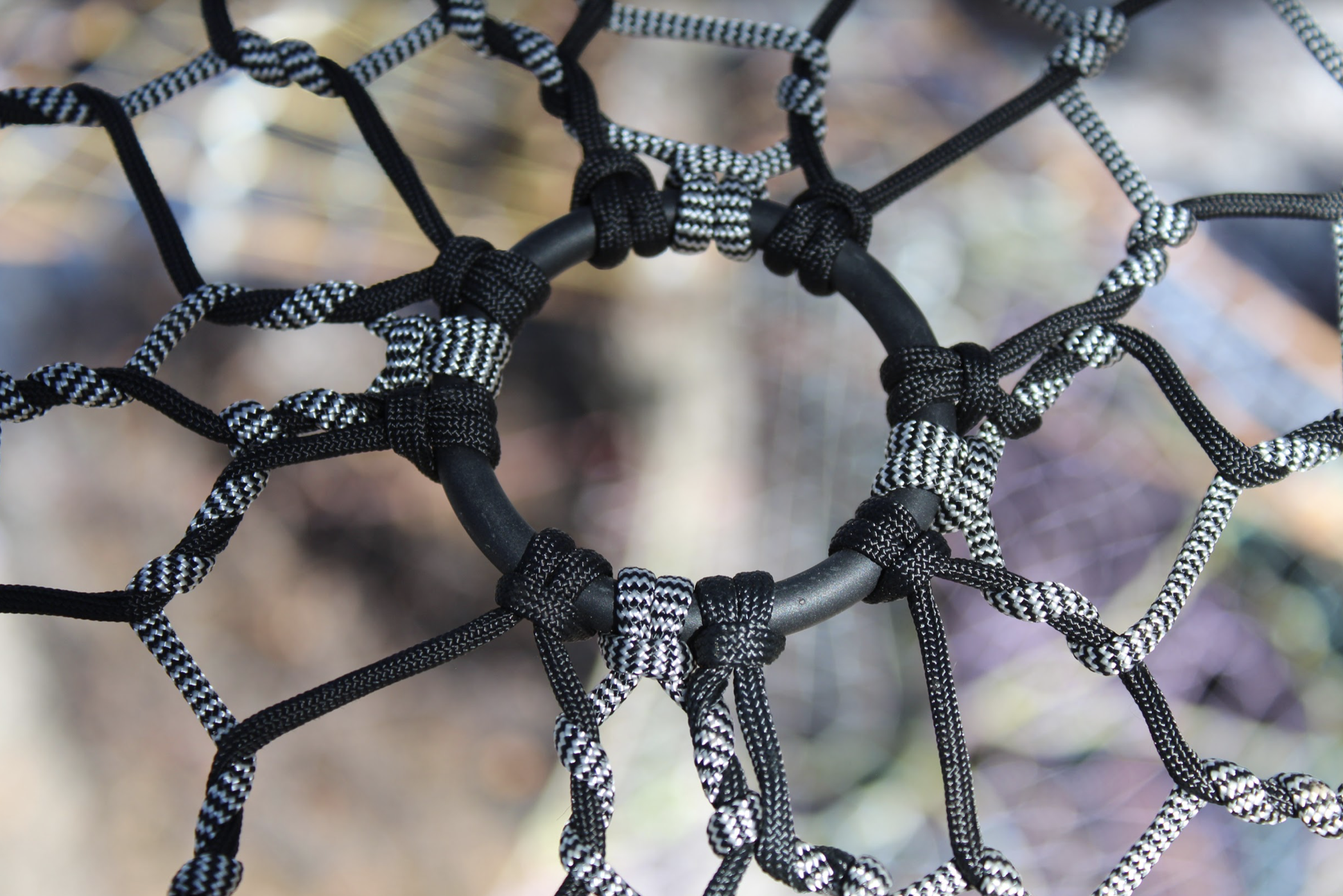
How do you envision the future of your career?
Not necessarily in the net hammocks, but in the large scale visual art installations. Currently, I’ve been teaming up with some riggers and stage builders to create more 3D structures to weave within. My main goal is to create some sort of amusement park style place where I can have all my craziest ideas in one spot, where people can come and enjoy them all at once.

***Answers have been edited for clarity.
Published May 1st, 2020
